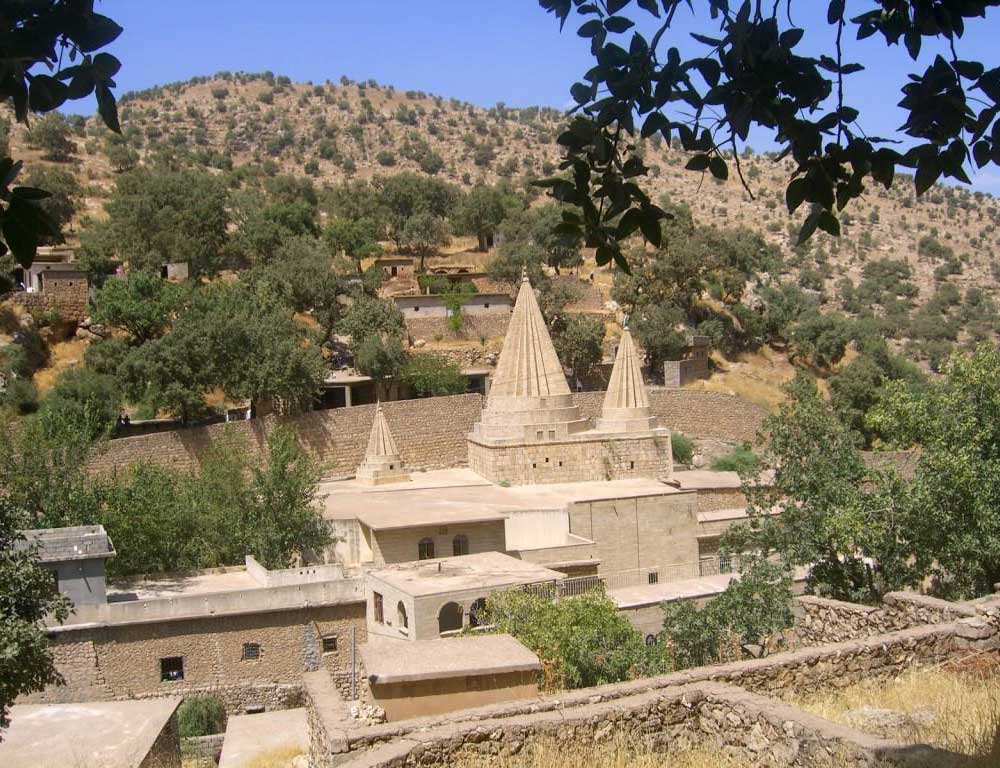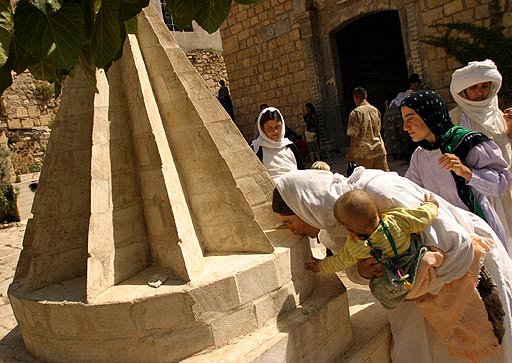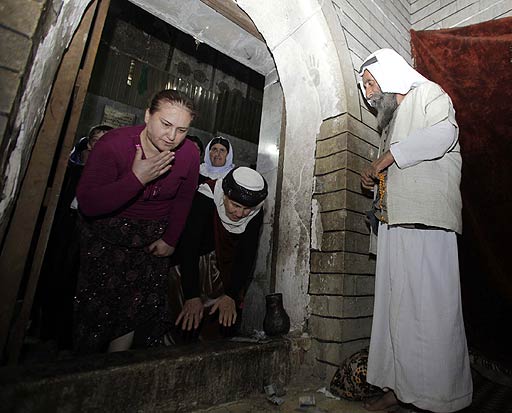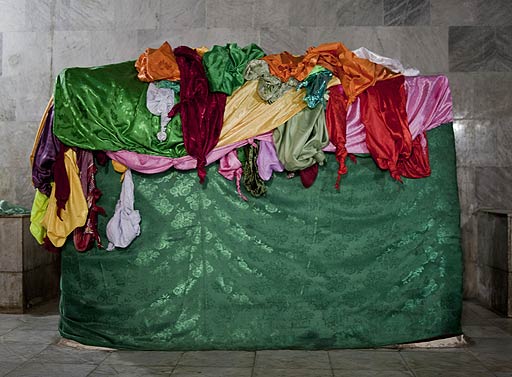
|
|||
|
| |||
Pilgrimage to LaleshYazidis' pilgrimage to Lalesh in Iraqi Kurdistanby Roodabeh KhodabakhshLalesh (or Lalish depending on pronunciation) is a small mountain valley situated in the north of Iraq, about 60 km northwest of the city of Mosul (Kurdish Ninawa). It is the location of the tomb of Sheikh Adi (Şêx Adî), main figure of the Yazidi faith. At least once in their lifetime Yazidis are expected to make a six-day pilgrimage to Lalesh to visit the tomb of Sheikh Adi and other sacred places. Yazidis living in the region are expected to make a yearly pilgrimage to attend the autumn Feast of the Assembly.
Lalesh is the spiritual heartland of the Yazidis, a place where they find both spiritual solace and physical protection during times of invasion and persecution. During the recent assaults on the Yazidis by Saddam Hussien and the Kurdish Moslems many Yazidis sought short and long-term refuge in Lalesh. The sacred history of Lalesh begins with the arrival of the Yazidis’ patron deity Tawsi Melek, the Peacock Angel, who first arrived on Earth when the planet was still barren and constantly besieged by earthquakes and volcanoes, Tawsi Melek was sent to Earth to remedy the situation and make the planet one of the most beautiful in the universe. Landing as a peacock at Lalesh, Tawsi Melek succeeded in stopping the Earth’s quaking and then he covered the planet with his “rainbow” peacock colours. It is believed that during the sacred Autumn festival in Lalesh Tawsi Melek still visits the place along with six Great Angels of the Yazidis. The focal point of Lalesh is the sanctuary, the shrine-tomb of the great Yazidi reformer Sheikh Adi. There are also tombs here dedicated to six of the Great Angels who took incarnation with Sheikh Adi, as well as shrines associated with the miracles of Sheikh Adi and landmarks that were, supposedly, once at Mecca, such as Mount Arafat. Legends state that Sheikh Adi transferred Mecca’s landmarks to Lalesh, thus making it the most sacred power spot on Earth. There is also a guesthouse attached to the Sanctuary to house the most distinguished Sheikh families during the sacred festivals at Lalesh. Known as the Mala Fagra or “House of the Faqir”, it is here that head of the order of Faqirs lives year round. The Faqir head is entitled to the revenue of alms collected from the pilgrims who visit the Sanctuary, a right he annually purchases from the Yazidi Prince. As one steps through the front entrance of the Sanctuary he or she is greeted by the image of a large black snake. According to one legend, this snake was once a live serpent. It was apparently causing problems for the residents of the Sanctuary so Sheikh Adi transformed it into a solid image when it attempted to scale the wall it is now attached to. Another legend states that Sheikh Mend, a companion of Sheikh Adi and an earthly manifestation of one of the Seven Great Angels, turned himself into this black snake and drove back the tribe of Haweris when they were attempting to convert the Yazidis to Islam. After stepping through main door of the Sanctuary one finds a dark pool of water to the right. This is the Lake of Azreal, the Angel of Death. Some Yazidis contend that Azreal washes his sword in this pool after taking a soul, while others claim that this is where Azreal brings the souls of the dead to be judged. According to tradition, Sheikh Adi is one of the principal judges of deceased souls. Proceeding to the nave of the Sanctuary one finds several tombs belonging to the earthly incarnations of the Seven Great Angels. Different coloured silks (the seven colours of the rainbow) cover the tombs, and these are knotted several times. Those pilgrims who seek assistance from the Seven Angels in solving their problems tie a knot (or knots) in one of the silk rags while simultaneously untying another one. The untied knot ensures that a previous pilgrim that tied the knot will soon find a rapid solution to his or her problem. The nave of the Sanctuary is connected to the chamber housing the tomb of the Angel Sheikh Hesen. From there one can move into the room of Sheikh Adi’s tomb. A pilgrim seeking the assistance and blessings of Sheikh Adi will walk around his tomb ten times while praying intensely. Attached to the chamber of Shiekh Adi’s tomb is the cave of the “wishing rock”. Legend has it that if one manages to throw a piece of cloth on top of this rock over a lit candle one’s wishes come true. This is said to be the rock that Sheikh Adi magically elevated in the air to convince some Sufi sheikhs of his divinity. Off to the left of Sheikh Hesen’s chamber is a small cave holding the sacred brook of Zamzam, which springs forth from a rock. Popular legends maintain that after being challenged by local Sufis Sheikh Adi tapped this rock and water magically began to flow from it. Outside of the Sanctuary one can find other shrines dedicated to the Seven Great Angels and other important deities dotting the Holy Valley of Lalesh. At one of the important shrines is the White Spring, so called because at the time of the Flood its water is said to have remained clean and clear, rising as a white tower towards the Heaven. This is where Yazidi children are commonly baptized, or the water is collected in a jar and taken outside of Lalesh for baptisms. Unfortunately the future of the whole sanctuary is worrying. Even though all the Kurds were Yazidi in ancient times, the current Kurdish government only earmarks funds for mosques, and Yazidis receive no money at all for the conservation of Lalesh. Yazidis, who have kept alive the Kurdish ancient belief for thousands of years, are still the pariahs among their own people. Courtesy: Fravahr.org of 20 November 2008
|



